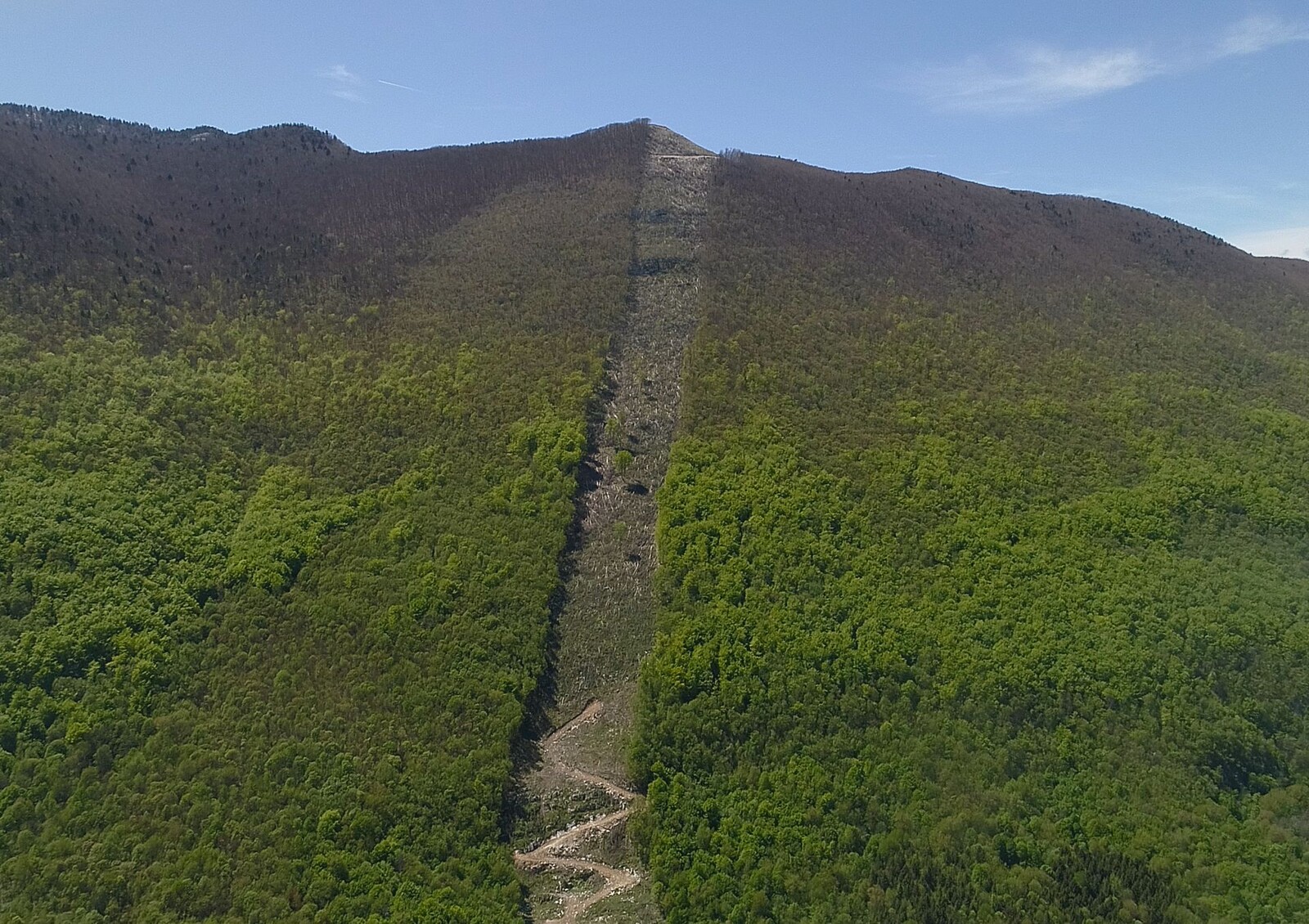December 19, 2024–February 23, 2025
Av. Dubrovnik 17
HR-10000 Zagreb
Croatia
Hours: Tuesday–Friday 11am–7pm,
Saturday–Sunday 11am–6pm
T +385 1 6052 700
msu@msu.hr
Artists: Dušica Dražić, Nermin Duraković, Ana Hušman, Maria Lai, Polonca Lovšin, Plateauresidue, No Name Kitchen, Masa Nazzal, Marika and Marko Pogačnik, Anton Vidokle, Karla Crnčević and Zemlja za nas (Land for Us)
The exhibition The Smell of Freshly Chopped Wood tells about our life, work and belonging to specific landscapes, forests, islands, plateaus and valleys of Balkans and Mediterranean region, Croatia, Slovenia, Serbia, Bosnia and Herzegovina and Italy, which at first sight look like idyllic nature. In fact, they are “living archives” whose “documents” are trees marked for felling, artificial lakes, objects left behind by refugees or the memories of the people who live there, their traditions, knowledge and experiences.
The hills of Parg, Plješevica, the fields of Lika, the forests of Pešter, the island of Brač, the village of Oliveto Lucano and Ulassai at first glance look as if they have not yet been affected by the problems of civilization, but in the works of our artists presented at the exhibition we see that this is not the case. In Croatia, Lika looks so idyllic, a sparsely populated region, one of whose valleys will soon be flooded by an artificial lake for the construction of a hydroelectric power plant. Most of the population left this barren landscape after the Second World War, and only the memories, which Ana Hušman enumerates in her film, remain. Among other things, she mentions the smell of freshly chopped wood when she talks about the hard, painstaking work of the women who ensured self-sufficiency and existence. Artist Polonca Lovšin talks about the fact that 40 percent of Slovenian forests are owned by women. Women are small owners and therefore have a less exploitative attitude towards nature.
The documentary Land for Us by Karla Crnčević is a testimony to the efforts to build a community based on feminism, that is, on circular economy and a non-invasive relationship with nature, telling the story of the women’s self-sufficient commune on the island of Brač in Croatia. Dušica Dražić invited volunteers to the forest on Pešter in southwestern Serbia, with whom she started reforestation as in the old days of socialism. The artistic tandem of Eva Pavlič Seifert and Aljaž Celarc, titled Plateauresidue, joins a local citizens’ initiative fighting against the construction of a wind farm on the Parg hill in southwestern Slovenia, which will, among other things, result in the large-scale felling of trees. Plateauresidue is essentially a family that lives on the edge of these forests and, like the Šempas family in Slovenia’s Vipava Valley, combines art and life. The Šempas family, into which the OHO group was transformed in the early 70s, was later reduced to the family of Marika and Marko Pogačnik, who still live there today. The oldest work in the exhibition is seminal Programmed Wood by the group OHO and Marko Pogačnik. It is an intervention in the landscape created by human activity—a fir “noise” planted to ensure trees for felling and further processing: in a regular grid of cultivated seedlings, a rhythm and system created mainly by human hands. In 1981, Maria Lai, together with the entire village community, organised a three-day event in her home village of Ulassai, Sardinia, based on the village legend of the blue ribbon, linking all the inhabitants and the mountain together. Anton Vidokle’s film, made in collaboration with the community of the village of Oliveto Lucano in southern Italy, describes the cycles of life from the point of view of cosmism, the cycles of nature that allow its “resurrection”, its constant renewal, and combines this with pagan rituals in which man, like a tree, can perhaps feed on solar energy. The film opens with a man chopping down a tree, telling a one-liner joke that both man and tree fall the same way when hit by an axe. Trees fall for various reasons, today because of better control of those who seek escape routes there. Such is the video of the artist Nermin Duraković, created above the mountain Plješevica, where the border between Bosnia and Herzegovina and Croatia passes. Croatia, with the help of European Union funds, created a gap by cutting down numerous trees in order to allow the inspection of migratory movements. The installation, created by No Name Kitchen, also brings traces left by “human spirits”—like an “archive” of invisible, unwanted human presence, the presence of those who took refuge in the sphere of mythical forest creatures and who could potentially bring life back to abandoned places.
Curated by Zdenka Badovinac, Jasna Jakšić and Ana Škegro.



